How To Quickly Lower the pH Level in Your Pool (Easy Steps)
-
- Last updated:
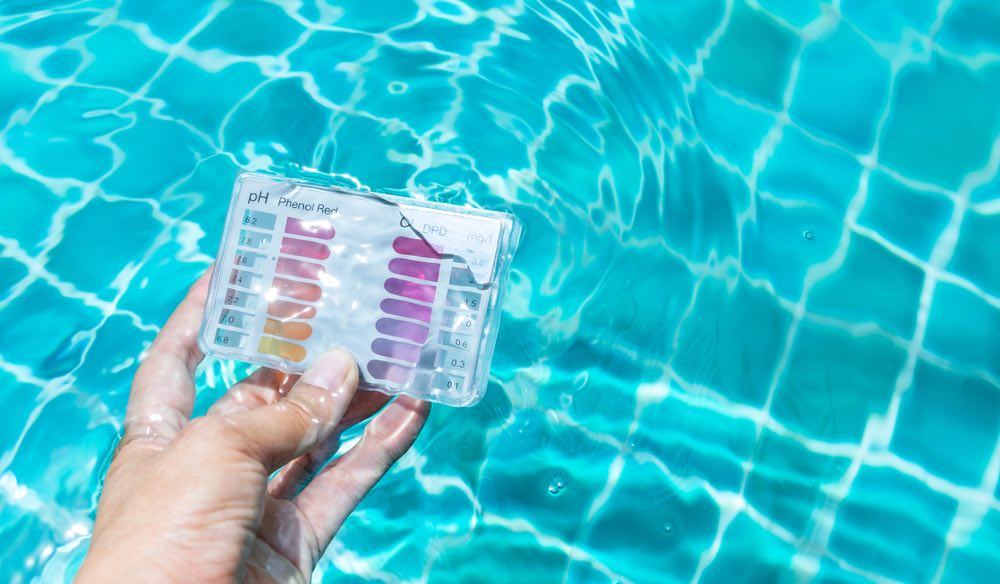

If you are doing your weekly pool pH check and you notice your pool pH level is too high, it is not a time to panic. Of course, you will need to implement a few quick steps to get your pH level back in range, but there is no need to worry at this point. If you don’t address the pH issue in the pool, you could be looking at some long-term issues. We have put together some quick and easy ways for you to lower your pool pH and some reasons why it may be off to begin with. Fixing the problem is great, but learning to prevent it can be even better!

What is pH anyway?
“pH” stands for “power of hydrogen”. The pH scale measures the logarithmic concentration of hydrogen (H+) and hydroxide (OH-) ions. This is water, (H+ + OH-) = H20. When both types are equal in concentration, the pH is 7.0, which is considered neutral.
When the concentrations aren’t equal, that’s where the problems start. PH is ranked on a scale from 1.0 to 14.0. The lower the pH of water, the more acid is in it, or the more acidic the water is. The higher the pH, the more base, or alkaline, it is. Our friends at UMassAmherst tell us, “pH affects many chemical and biological processes in the water and different organisms have different ranges of pH within which they flourish.”
How Do I Know If My pH Level Is Too High?
The pH level of your pool should always stay between 7.2 and 7.6. Ideally, 7.4 is where you would want the level to stay, but it is tough to keep pH that stable. Most times, when you check pH, it will be somewhere within this range, and that is completely fine. When you start seeing numbers of 7.7 or higher, action needs to be taken to lower it.
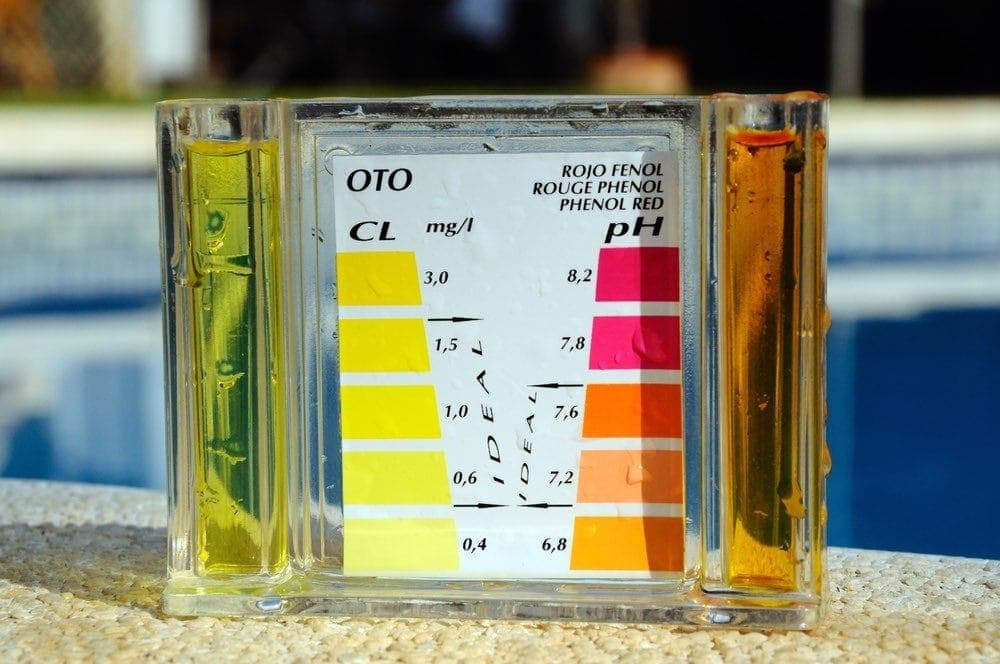
Steps to Lower The pH in the Pool
Luckily some products on the market will help you with this process. Here are the steps to take to make sure you lower the pH in your pool to the proper level and not too low!
- Test and measure the pH in your pool so that you know your starting point.
- Purchase a product that will lower pH in your pool; most of these products will contain muriatic acid or sodium bisulfate. Here are a few that may be worth trying.
- Add the product that you purchased to the pool in the correct amount. You will need to calculate your pool size and follow the manufacturer’s recommendation. Most pool professionals will tell you to use about ¾ of the recommended amount. If you need to add a little extra, that won’t be hard to do. You don’t want to put yourself in a situation where you end up needing chemicals to raise pH.
- Let your pool filter run for as long as you can, twenty-four hours is best. This will help the chemical distribute evenly and work effectively.
- Test the pH in your pool again and adjust accordingly.
What Will Happen to My Pool Water With a pH Level That is Too High?
If your pH level is too high and it stays too high, you will start to notice some other issues with your pool. For starters, the swimmers in your pool may complain of increased skin or eye irritation after or during a swim. You will also notice your pool is blowing through chlorine at a much faster rate.
One of the less visual effects of your pH being too high is scaling. Scaling can happen inside the pipes, and you will not notice this happening. As scaling increases, the pipe diameter gets smaller, and your pool pump will be working harder to get water through. This can cause a motor to burnout and a much more expensive fix than just paying attention to your pH levels.
Lastly, sometimes the reason your pool water is cloudy is because the pH is too high. Cloudy water should be a relatively easy thing to see and an early sign to make sure you get this problem remedied fast.
Why does pH need to be balanced?
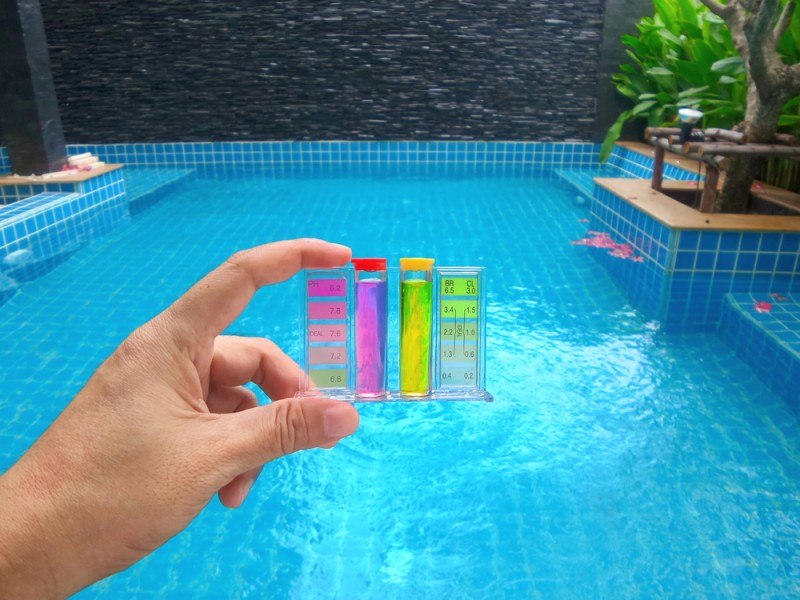
First of all, consider that the pH of human teardrops is about 7.5. Having a pool pH as close to that number as possible will make swimming more comfortable. We often hear people complaining about the chlorine level in the pool hurting their eyes, but the truth is, unbalanced pH levels, not chlorine, is almost always the problem. So that’s number one.
Number two is that high pH can cause all sorts of problems in the water, and in your pool equipment. High pH can lead to scaling, which in turn leads to clogged filters, reduced circulation, and if you have a heater, it can clog the heating elements in it too. High pH also leads to cloudy water and impaired functioning of the chlorine in the water. In addition to eye irritation, high pH can also irritate your skin.

Chemical Options for Lowering pH
Since high pH means the water in your swimming pool is too alkaline, you need to add acid to the water to lower it again. These acid chemicals are sometimes referred to as pH minus, pH decreaser, and pH reducer. Regardless of the name, there are two basic types of acid for use in swimming pools; Sodium Bisulfate, also known as dry acid, and Liquid Hydrochloric, also known as muriatic acid.
Acids are dangerous chemicals that can burn and scar flesh as well as cause damage to pool liners, equipment, clothes, and anything else it comes in contact with. Therefore you need to exercise extreme caution when dealing with it.
Option 1: Dry Acid (Sodium Bisulfate)
Although the percentage of sodium bisulfate will differ from manufacturer to manufacturer, the most common percentage is around 93%. The amount you’ll need to add to your pool will vary depending on the pH level you measure with your testing kit and the specific percentage in your product. The instructions on the label will tell you exactly how much of that particular product to use, so read them carefully and never assume you can use the same amount from one brand to another.
Sodium Bisulfate comes in a powder. Don’t put it out on a windy day because it can blow back all over you, your clothes, pool deck, and equipment. If you live in a windy area – like Chicago – stand upwind to pour it into the pool, and keep the container as close to the water as possible.

Pour about three-fourths of the recommended amount of the powder into the pool right at the water return jets so it will be quickly spread around the entire pool. If there’s no wind, you can sprinkle it in the water all the way around the pool to accomplish the same thing. If three-quarters of it aren’t enough you can always add more of it later, but adding too much will cause problems on its own, so play it safe.
Allow two to four hours for the chemicals to mix then test it again. If the pH is still too high, you can add a little more, wait two to four more hours then test it again.
Option 2: Muriatic Acid (Liquid Hydrochloric)
Muriatic acid is more dangerous than dry acid because it’s a liquid that will cling to your skin and clothes if you get it on you. You should definitely wear protective gear when working with it.
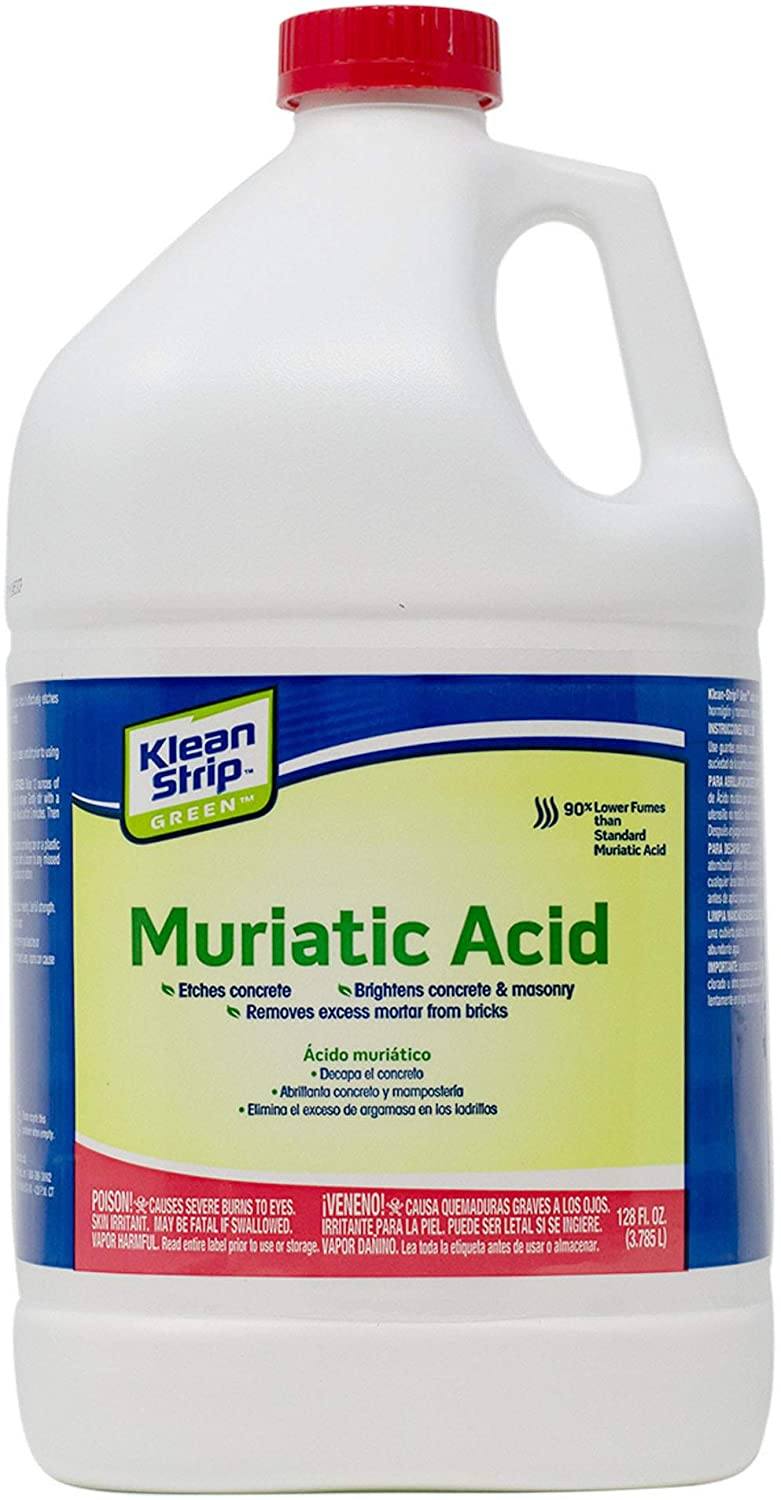
As with the sodium bisulfate, add three-quarters of the recommended amount at the pool return jets or evenly scattered around the pool. Wait two to four hours then test the water. If the pH is still too high, repeat this process using successively smaller amounts of acid until the water has finally been balanced.

Why Is My pH Level So High to Begin With?
Now that you have your pH level fixed, you are going to want to make sure it stays there. There are several factors that could have raised your pH to begin with. Sometimes if the alkalinity in a pool is too high, the pH will go up. Be sure to do a check of the alkalinity before thinking your pH problem is a thing of the past.
The other thing that could have caused the pH to go to high is too much shock in the pool. If you have recently been shocking your pool more frequently, there is a chance this caused an increase in pH.
Best Ways to Maintain The pH Level in My Pool
The best possible thing any pool owner can do to maintain the pH levels in their pool is to check the pH twice per week. Some people continually think that testing chlorine is enough to maintain a pool; it is not. Get a pool test kit that checks a variety of levels in your pool, but more importantly, pH and chlorine.
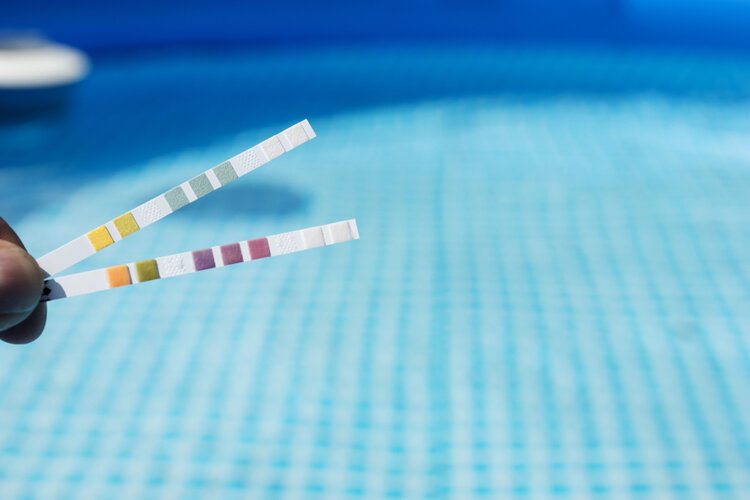
Final Cautions
Although it’s safe for swimmers to go back in the water within two hours, you should keep everyone out of the pool entirely until the pH levels have been brought back under control. Swimmers can introduce contaminants into the pool from particulate matter on their suits, their skin, or hair.
It’s best to keep the variables in this equation down to a minimum until the process is done. Your pH levels will be controlled much more quickly and easily that way.

Conclusion
Lowing the pH in your pool should be a quick fix. Because of the complications that can come up with having the pH too high, be sure you address this problem as soon as you can. Always use caution when playing with chemical levels in a pool, don’t add too much pH Decreaser that you will then need to increase the pH. If you oversee your pool’s pH level, you will likely only need a minimal amount of chemical to fix the issues.
Featured image credit: kaewgorn, Shutterstock
Contents

